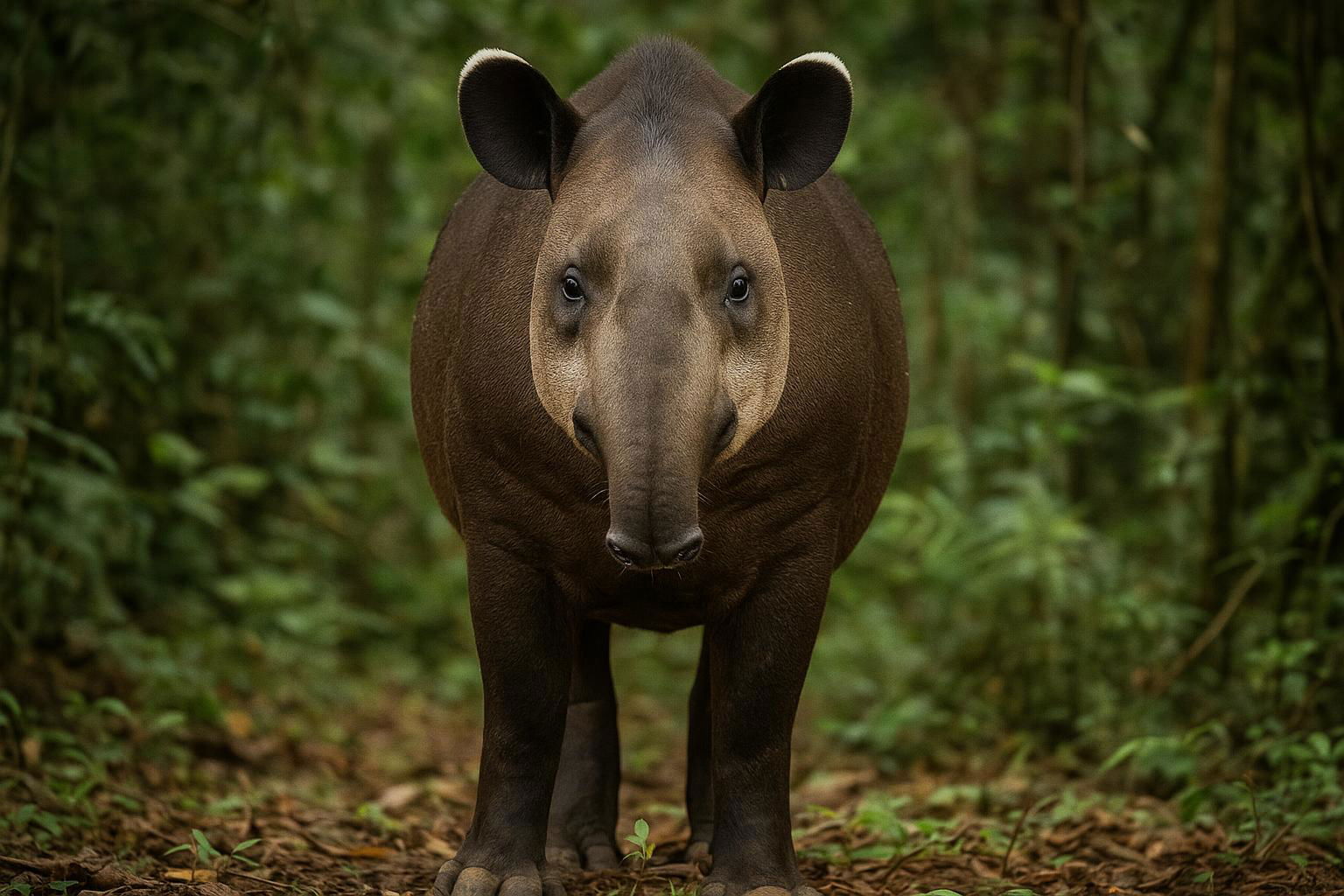
Baird'S Tapir
Tapirus bairdii
Baird's Tapir (Tapirus bairdii) is a unique and relatively large mammal found in the dense forests and grasslands of Central America and northern South America, ranging from southern Mexico through Panama. This species, often referred to as the "mountain cow" in local communities, is recognized by its stocky, pear-shaped body, which can weigh between 240 to 400 kilograms (530 to 880 pounds). Its coat is generally dark brown or grayish, and it features a distinctive short, fleshy trunk-like snout, an adaptation that assists in foraging for leaves, fruits, and twigs. The tapir's prehensile snout is especially adept at navigating the undergrowth to find food.
Baird's Tapirs are the largest land mammals in their range and are crucial for ecosystem health, acting as seed dispersers that facilitate the growth of various plant species. These primarily solitary creatures are mostly nocturnal, preferring to roam through the forest at night, though they may also be active in the early morning or late afternoon. Despite their discreet nature, Baird's Tapirs are sadly listed as endangered due to habitat loss, poaching, and fragmentation from human activities. Conservation efforts are critical for their survival, focusing on habitat protection and mitigating human-wildlife conflict. Their elusive nature and vital ecological role continue to spark interest and efforts in wildlife conservation across their range.

 All Species & Breeds
All Species & Breeds
 Highland Cattle
Highland Cattle
 Miniature Donkeys
Miniature Donkeys
 All Species Directory
All Species Directory
 Highland Cattle in Virginia
Highland Cattle in Virginia
 Miniature Donkeys in Texas
Miniature Donkeys in Texas












